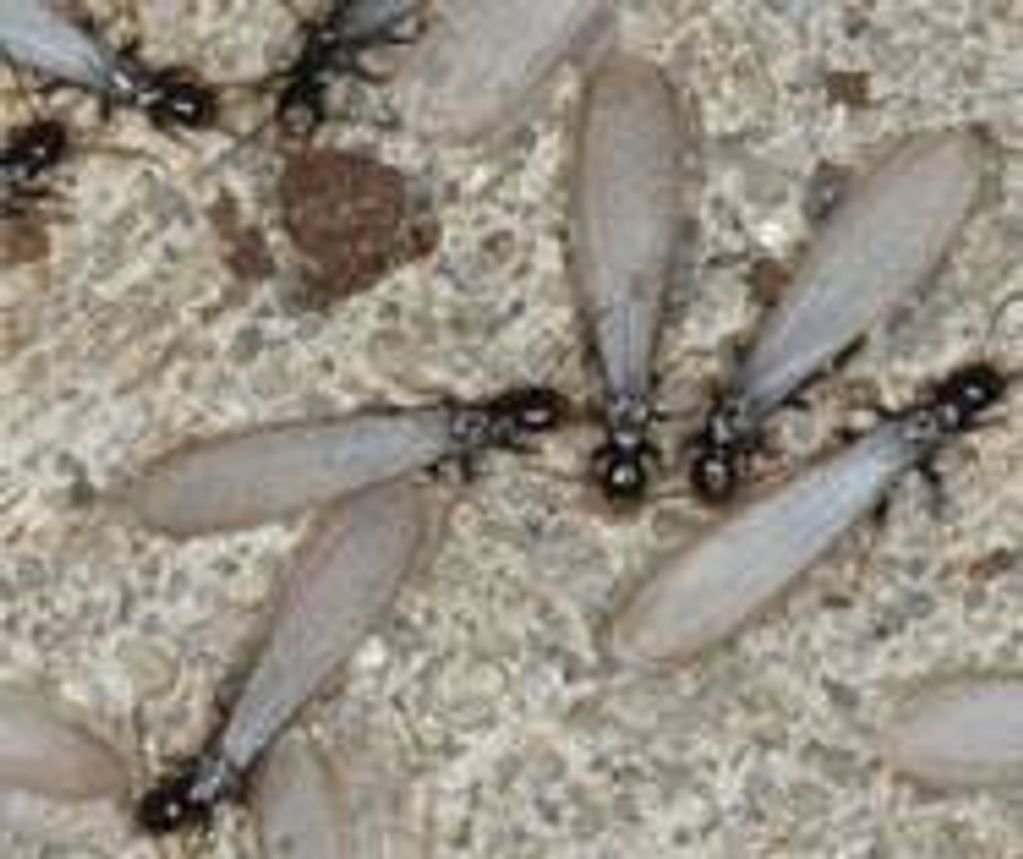Over 20 years experience. Thousands of inspections performed.
Wood destroying insects (wdi)
Termites
Why worry about termites?
Termites cause billions of dollars in damage each year. They primarily feed on wood, but also damage paper, books, insulation, and even swimming pool liners and filtration systems. Termites can injure living trees and shrubs, but more often are a secondary invader of woody plants already in decline. While buildings may become infested at any time, termites are of particular importance when buying or selling a home since a termite inspection/infestation report is normally a condition of sale. Besides the monetary impact, thousands of winged termites emerging inside one's home are an emotionally trying experience — not to mention the thought of termites silently feasting on one's largest investment.
Why are infestations often discovered during March - May?
Spring typically is when large numbers of winged termites, known as "swarmers," emerge inside homes. In nature, termites swarm to disperse and start new colonies. Triggered by warmer temperatures and rainfall, the winged termites emerge from the colony and fly into the air.
The swarmers then drop to the ground, shed their wings, pair off with a mate, and attempt to begin new colonies in the soil. Few swarmers emerging outdoors survive to start new colonies. Swarmers emerging indoors are incapable of eating wood, seldom survive, and are best removed with a vacuum. They do, however, indicate that an infestation is present.
How will I know if my home is infested?
Discovering winged termites indoors almost always indicates an infestation warranting treatment.
People often confuse winged termites with ants, which often swarm at the same time of year. Termites can be differentiated by their straight antennae, uniform waist and wings of equal size. (Ants have elbowed antennae, constricted waists and fore wings that are longer than the hind wings.)
The swarmers are attracted to light and are often seen around windows and doors. Termite swarmers emerging from tree stumps, woodpiles, and other locations out in the yard are not necessarily cause for concern, and do not necessarily mean that the house is infested. On the other hand, if winged termites are seen emerging from the base of a foundation wall or adjoining porches and patios, there's a good chance the house is infested also and treatment may be warranted.
Other signs of infestation are earthen (mud) tubes extending over foundation walls, support piers, sill plates, floor joists, etc. The mud tubes are typically about the diameter of a pencil, but sometimes can be thicker.
Other signs of infestation are earthen (mud) tubes extending over foundation walls, support piers, sill plates, floor joists, etc. The mud tubes are typically about the diameter of a pencil, but sometimes can be thicker.
Termites construct these tubes for shelter as they travel between their underground colonies and the structure. To help determine if an infestation is active, the tubes may be broken open and checked for the presence of small, creamy-white worker termites. If a tube happens to be vacant, it does not necessarily mean that the infestation is inactive; termites often abandon sections of tube while foraging elsewhere in the structure.
Termite-damaged wood is usually hollowed out along the grain, with bits of dried mud or soil lining the feeding galleries. Wood damaged by moisture or other types of insects (e.g., carpenter ants) will not have this appearance. Occasionally termites bore tiny holes through plaster or drywall, accompanied by bits of soil around the margin. Rippled or sunken traces behind wall coverings can also be indicative of termites tunneling underneath.
Oftentimes there will be no visible indication that the home is infested. Termites are cryptic creatures and infestations can go undetected for years, hidden behind walls, floor coverings, insulation, and other obstructions. Termite feeding and damage can even progress undetected in wood that is exposed because the outer surface is usually left intact.

Termite workers..usually hidden inside the wood or mud tubes
Photo Gallery

Termite swarmers usually present in the spring

Termite shelter tubes or mud tubes indicate infestation of the structure

Winged ant vs Winged termite swarmer

Copyright © 2020 Kerr Home Inspections - All Rights Reserved.
Powered by GoDaddy Website Builder